A new era
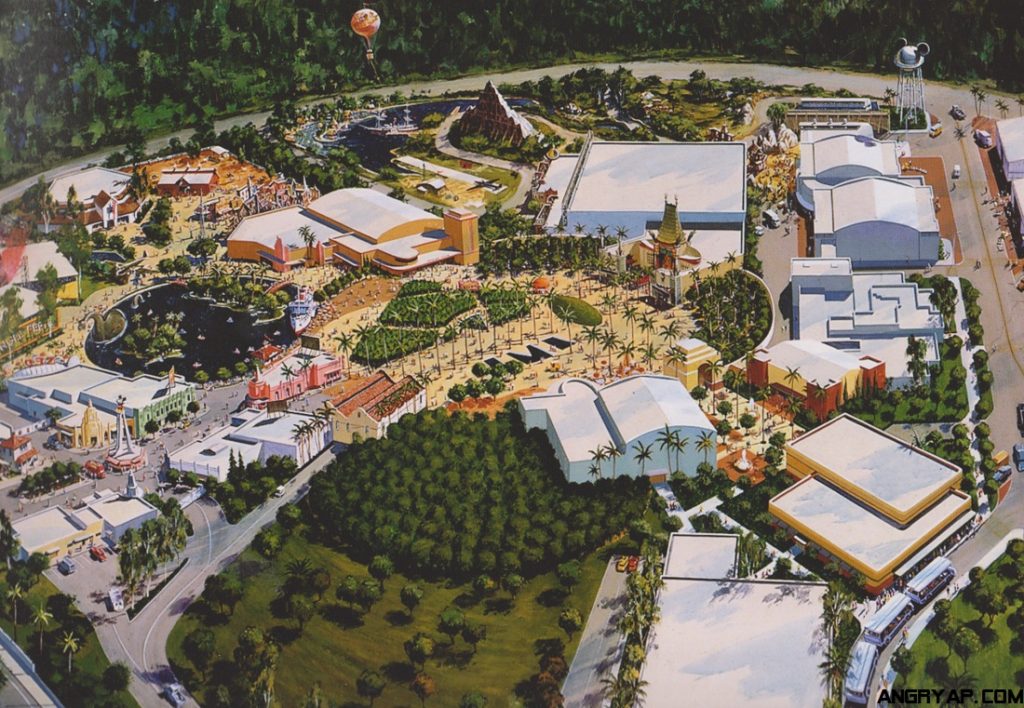
In 1989, the Disney-MGM Studios opened. It was quickly followed by 1990’s Universal Studios Florida.
Frankly, Disney had already signaled that theme parks could be a marketing tool used by filmmakers to connect families to their studios’ brands… but only the opening of those two Studio parks in Orlando showed that opening a theme park need not require the budget and design detail of Disneyland. Instead, theme parks could now offer mix-and-match intellectual properties, bare steel roller coasters merely bearing the name of a box office hit, and barren, beige “backlots” were an acceptable form of decoration. Like clockwork, the 1990s today are remembered as the “Age of the Studio Park,” where movie studios gobbled up or opened up theme parks of their own across the world.
In 1992, Kings Entertainment Company (the park-operating spin-off of Taft) sold its five theme parks to a studio eager to get a foothold: Paramount Communications.
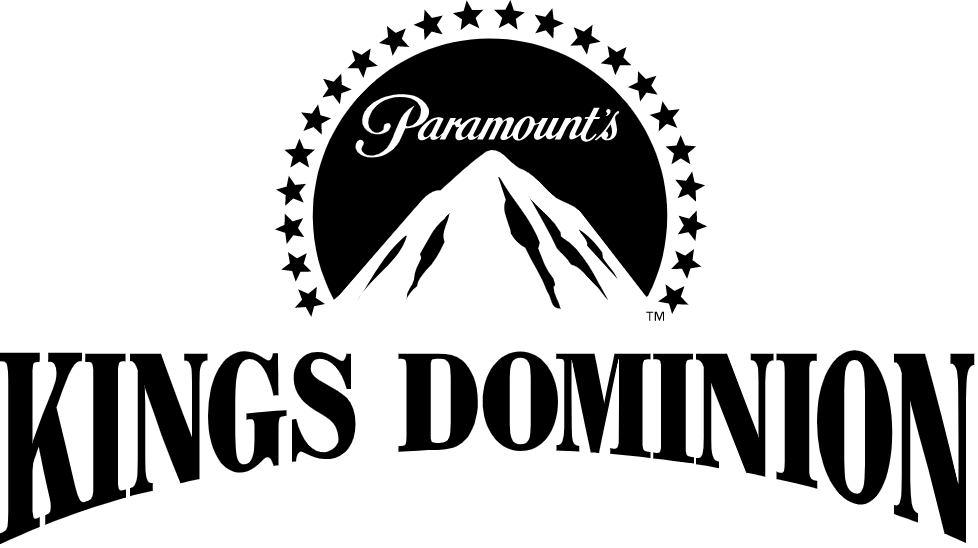
Like its sister parks, when the Virginia park opened for the 1993 season, it was with a new prefix: Paramount’s Kings Dominion. In its first year under new ownership, the park received its first cinematic attraction: a motion simulator themed to Paramount’s Days of Thunder (a NASCAR action drama starring Tom Cruise) while construction ramped up on a whole land themed to Wayne’s World, anchored by the thrilling Hurler wooden roller coaster.
But in 1993, the Lion Country Safari ride was shuttered. The land was renamed Safari Village, and while the Lost World continued to loom over it, the mountain had lost one of its inhabitants, too. The Smurf Mountain dark ride was done for. Though both rides are remembered as heartbreaking losses for generations of locals (and none-too-pleasant a way to begin Paramount’s reign), it makes sense that Paramount would have little interest in running a zoological park or in operating a ride themed to Hanna-Barbera’s cartoons when they were poised to bring their own Nickelodeon brand into the park.
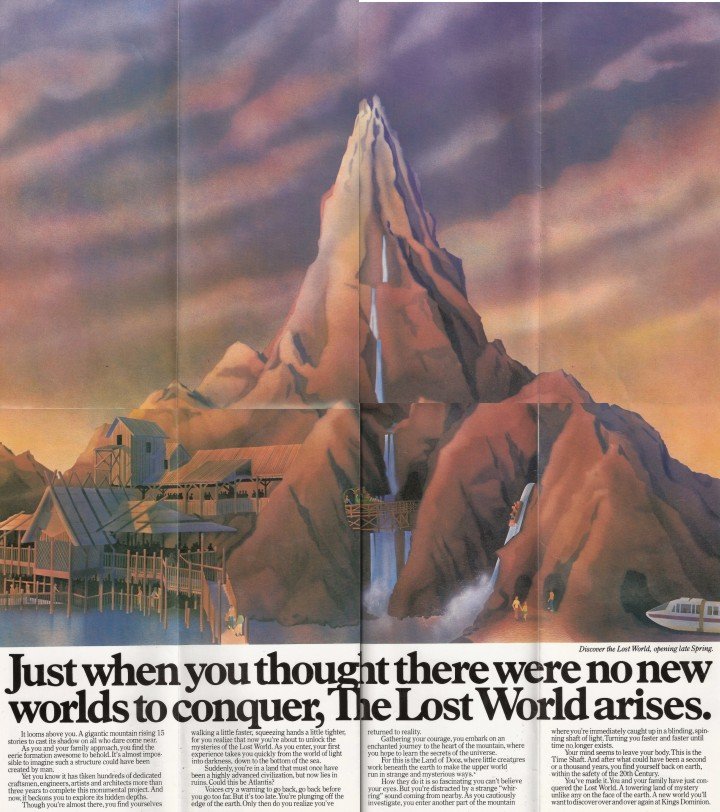
In 1993 and 1994, both the Haunted River and Time Shaft continued to operate deep within the Lost World mountain, but of course, their time was short. In 1995, the Lost World was lost forever… The mountain was sealed off, never to be entered again… or so it seemed…
The Outer LIMits
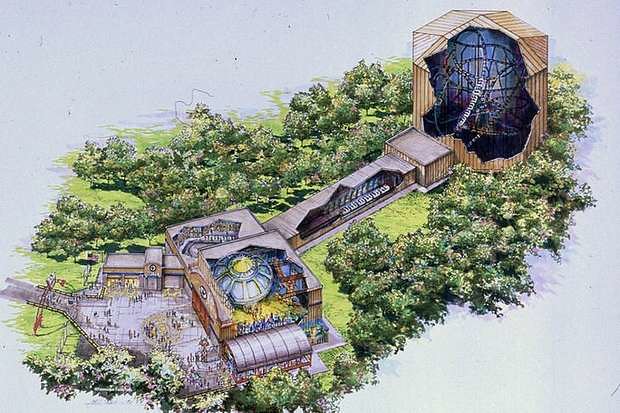
In 1996, Paramount’s Kings Dominion pulled out all the stops in debuting a spectacular new ride that was… well… two-of-a-kind. Co-premiering with an identical clone at Paramount’s Kings Island, The Outer Limits: Flight of Fear was a brand new kind of roller coaster.
Themed to the anthology television series The Outer Limits (a ‘90s Showtime take on The Twilight Zone with eerie, unsettling, sci-fi stories), guests would be invited into the Press Area of a mysterious government hangar run by the U.S. Bureau of Paranormal Affairs. Inside, they’d find something extraordinary: a UFO under government study. Stepping aboard, riders would unknowingly become part of a sinister experiment with alien invaders discovering “what happens when the human body is pushed to the Outer Limits.”
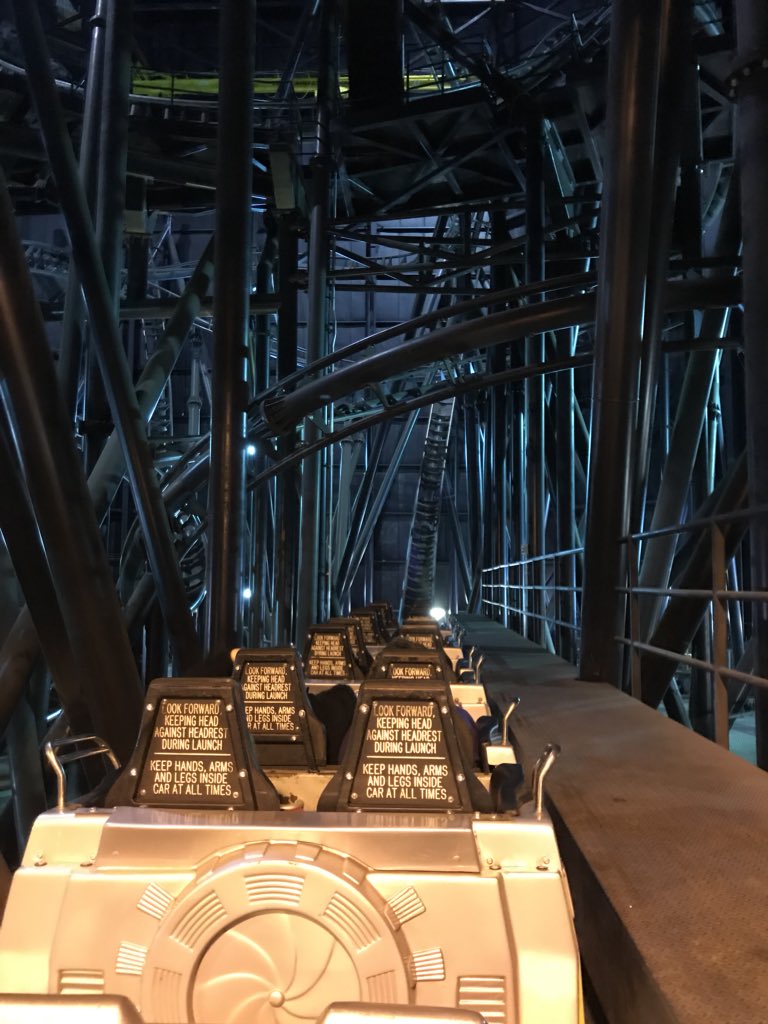
In reality, this incredible launched coaster accelerates guests down a straightaway and into a tangled “spaghetti bowl” of track – including three inversions – as it twists and turns in a convoluted and awe-inspiring layout. But the most exceptional thing about Flight of Fear wasn’t just its well-themed, Universal-caliber queue or even its intense and spectacular ride experience; it was its technology.
You have to imagine that, for most of history, if you wanted to “launch” a roller coaster, there were only a few ways to do it. You could build up stored, potential energy in a winch and release it in a burst, pulling a train down a track; you could drop a heavy counterweight, propelling a train; or you could place motor-controlled drive-tires in the track that would gradually accelerate it. All have an inherent flaw: friction. Whether it’s fraying wires or balding tires, any time something has to push against something else, things can go wrong.
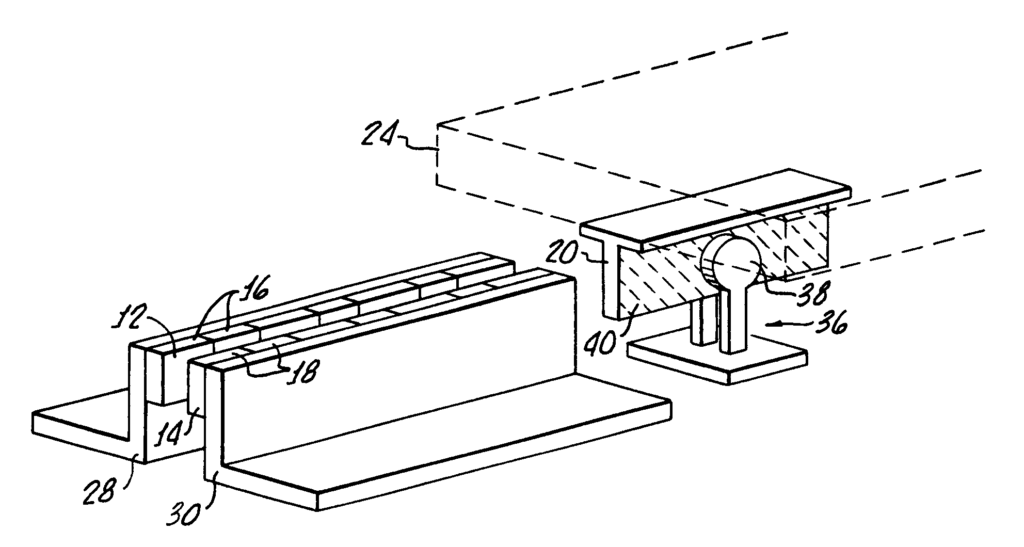
But Flight of Fear was the first use of a new technology: LIM, or Linear Induction Motors – one of our “Seven Modern Wonders of the Theme Park World.” Rather than using contact forces like counterweights or tires, LIMs use electromagnetism. On LIM coasters, each train is equipped with a metal fin, perfectly-positioned to pass through a narrow slot on electric motors positioned down a stretch a track. When supplied with power, those motors generate electromagnetic fields, attracting-in then repelling-out the fins on the train, producing a continuous acceleration with no contact (and thus, no friction) involved.
Flight of Fear set a new standard for launched coasters. And with their next project in development, Paramount’s Kings Dominion would be the launched coaster capital of the world…
VOLCANO: A Lava Chase Adventure
In reality, Paramount had substantial plans for what to do with the old Lost World mountain, as evidenced by rare concept art revealed by Shane’s Amusement Attic.

As the story goes, Paramount Creative had drafted out an ambitious attraction wherein guests would plunge through the mountain’s interior in a concealed roller coaster, joining the “Lava Chasers” – “a group of Gen-X volcano aficianados made up of young geologists, scientists, and researchers” – on the quest for the ultimate adventure.
This early concept would’ve seen guests trek up the side of the mountain to the Lava Chasers base camp, viewing video footage of past expeditions into the peak. Finally, guests would board floorless vehicles for their own descent.
To the mystic sounds of tribal drums, the coaster would’ve ducked into a volcanic lava tube and plunged into the heart of the mountain. Riders would speed behind a lava waterfall and past the remains of an ancient city, dodge bursts of flame, shaking rocks, and bubbling magma, and even “skate” over the surface of a lava pool…
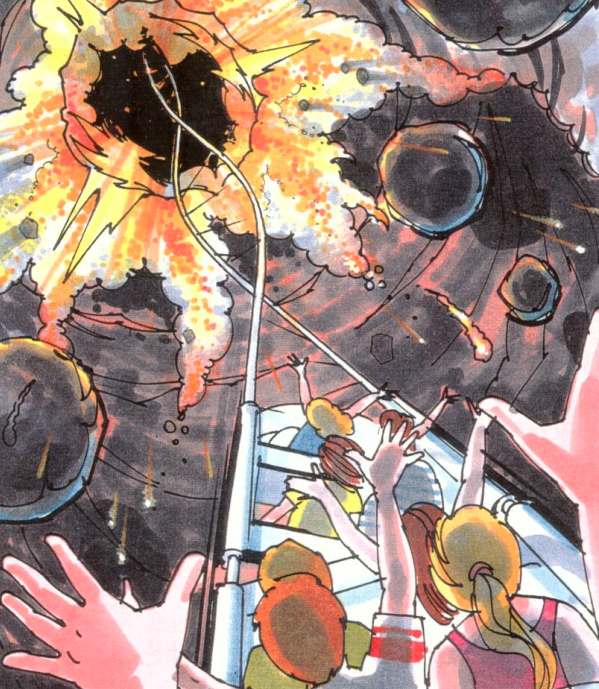
…before finally accelerating straight out of the mountain’s peak using LIMs. Yes, Paramount planned for a second LIM launch coaster right next to Flight of Fear… And though ultimately the design and ride system changed, the concept was strong enough to stick around…
Volcano Rises
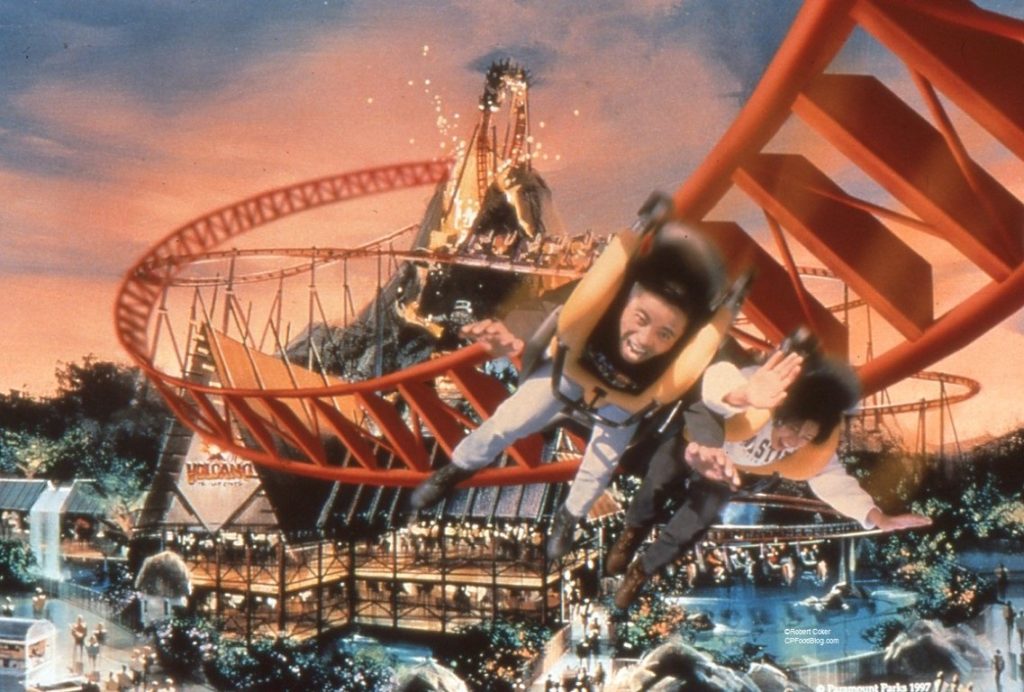
On July 22, 1997, Paramount Parks announced that the Lost World would live again… but with an entirely new inhabitant. VOLCANO: The Blast Coaster would be the world’s first inverted LIM coaster (meaning, with trains suspended beneath the track rather than set atop), launching riders into and out of the Lost World mountain.
During the off-season between 1997 and 1998, major modifications were underway at the Lost World. First of all, the mountain was hollowed out. The intricate and interwoven attractions inside – the Haunted River, the Time Shaft, and the remains of Smurf Mountain – were entirely removed, revealing the substantial network of scaffolds, mesh, and concrete that formed the mountain itself.
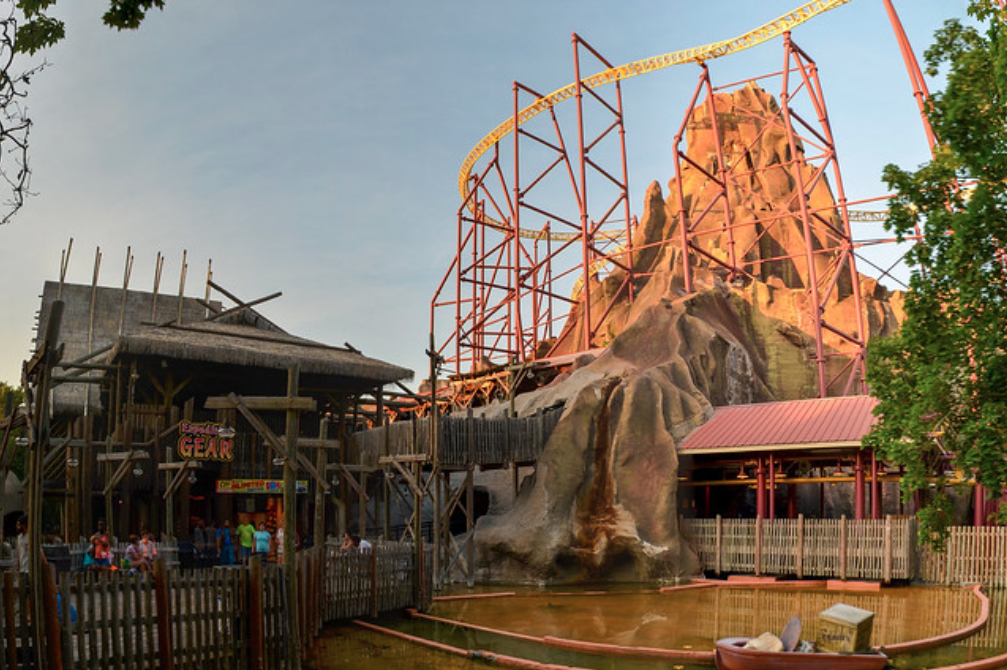
To accommodate the roller coaster’s entry and exit points and its network of supports, multiple changes were made to the exterior of the mountain, including lopping off the mountain’s pointed peak to officially transform the mountain into a volcano. Still, the water basin at the volcano’s foot remained, even including the river channel of the Haunted River (see above).
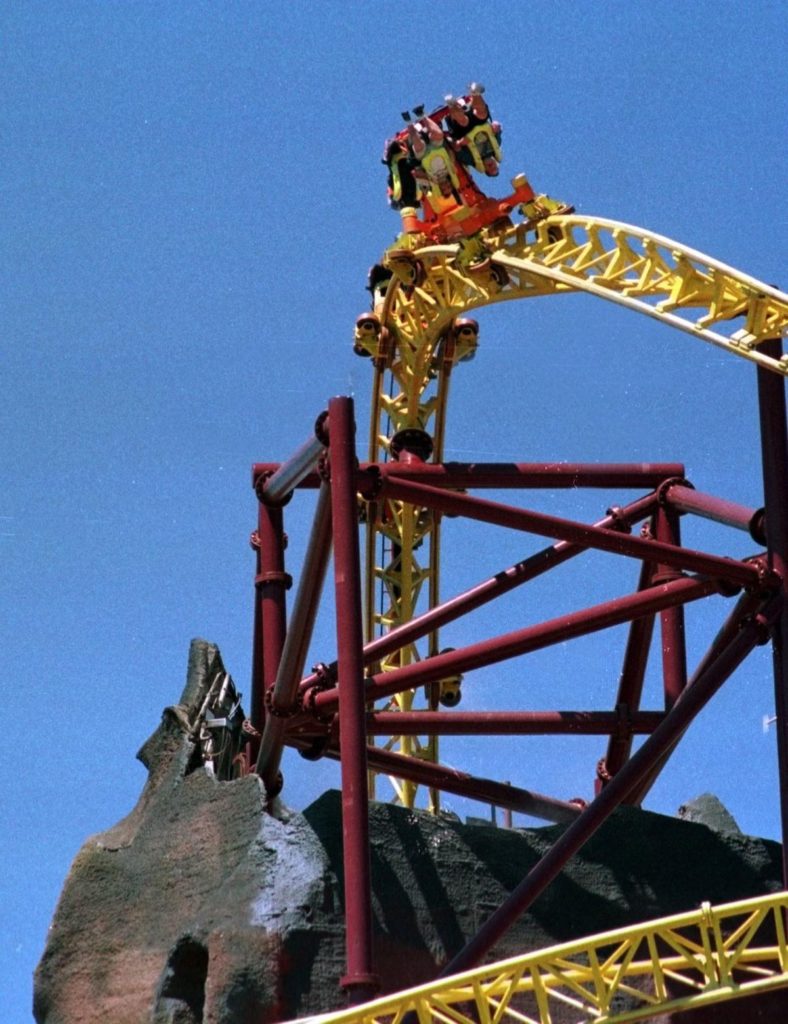
From the very beginning, technical difficulties plagued Volcano. The elaborate prototype ride that was meant to be the centerpiece of the 1998 season didn’t open as expected in April. Or May. Or June. Or July. Allegedly, the ride had a major frustration: it couldn’t reliably crest the ride’s signature element: an upside-down roll-out of the volcano – the world’s highest inversion at 155 feet. Without enough speed to complete the maneuver, the tested train continuously “rolled back” (a perfectly safe and accounted-for procedure).
While ride manufacturer Intamin sought a permanent solution, the ride officially opened August 15, 1998 with a temporary fix: Volcano operated at half-capacity, seating guests in every other row to lessen the trains’ weight.
The eventual solution installed in the 1998-1999 off-season actually became one of the ride’s signatures: a second set of LIM motors [a rolling launch, or LIM boost] was positioned leading into the ride’s vertical ascent, giving the train the last burst it needed to erupt from the mountain at full speed, clearing the roll-out with ease.
Are you ready to face the fury of VOLCANO: The Blast Coaster? On the last page, we’ll take a trip into this fiery peak and see why this legend was lost…




